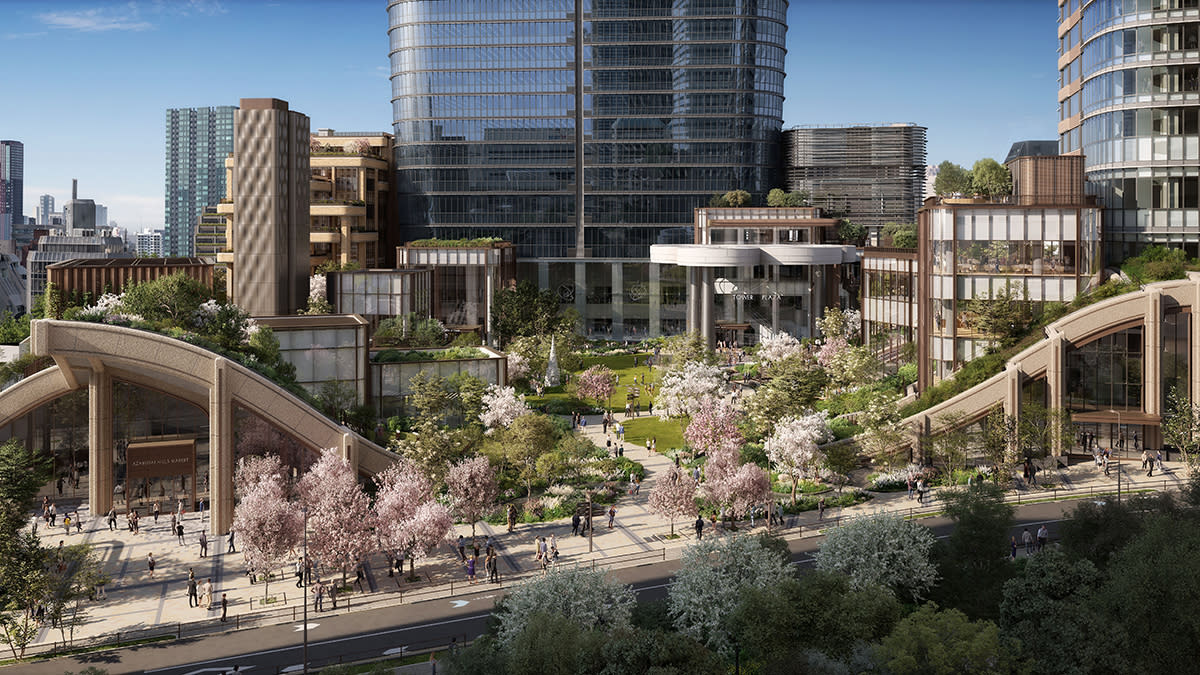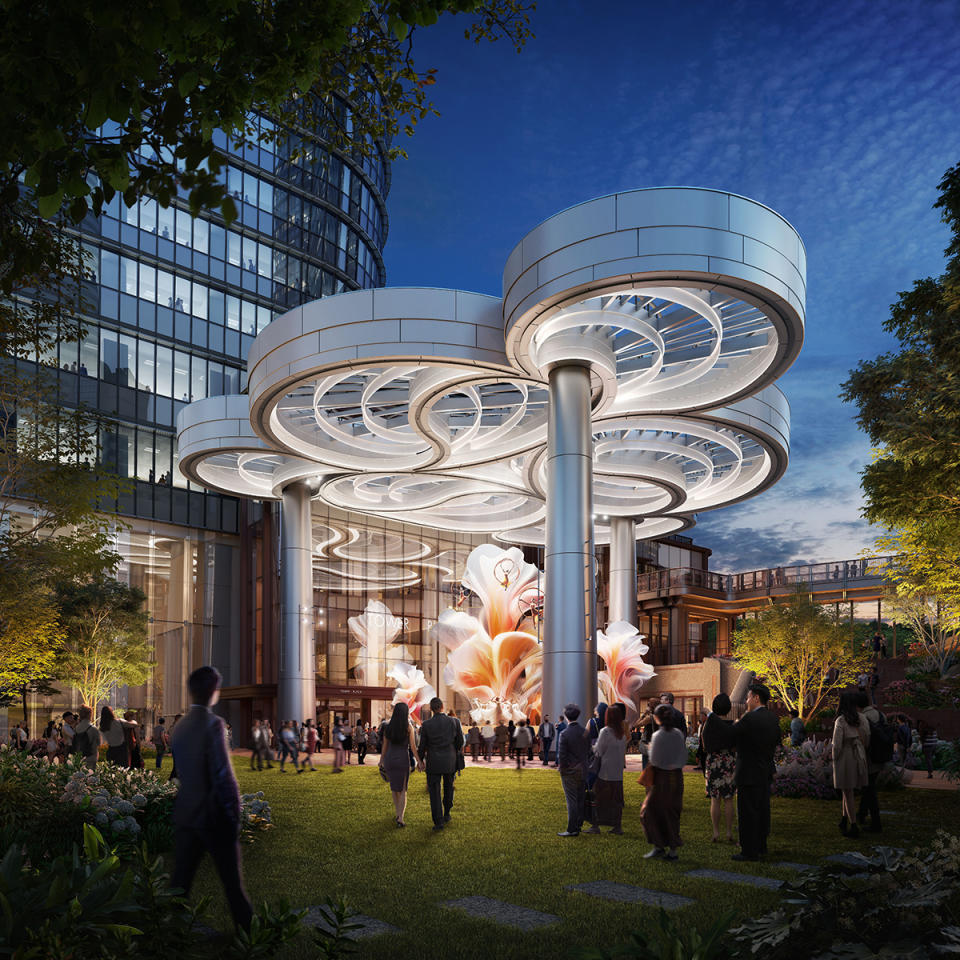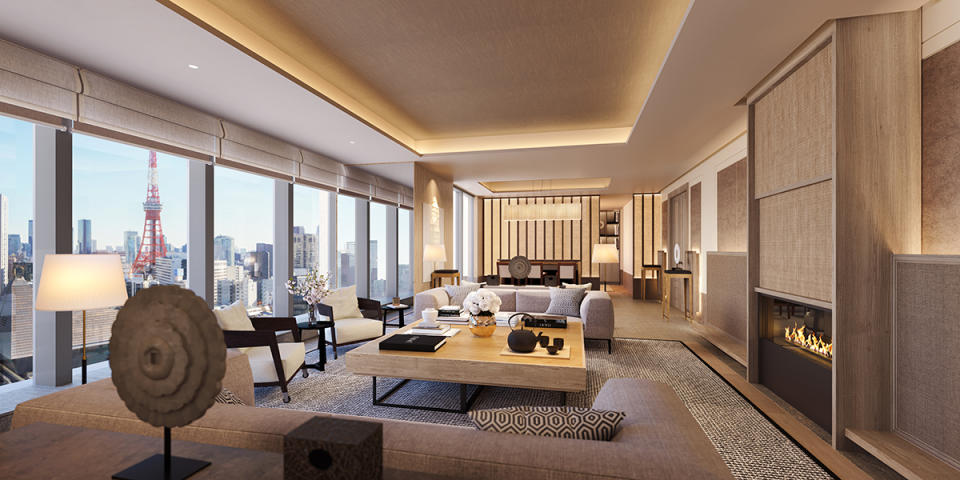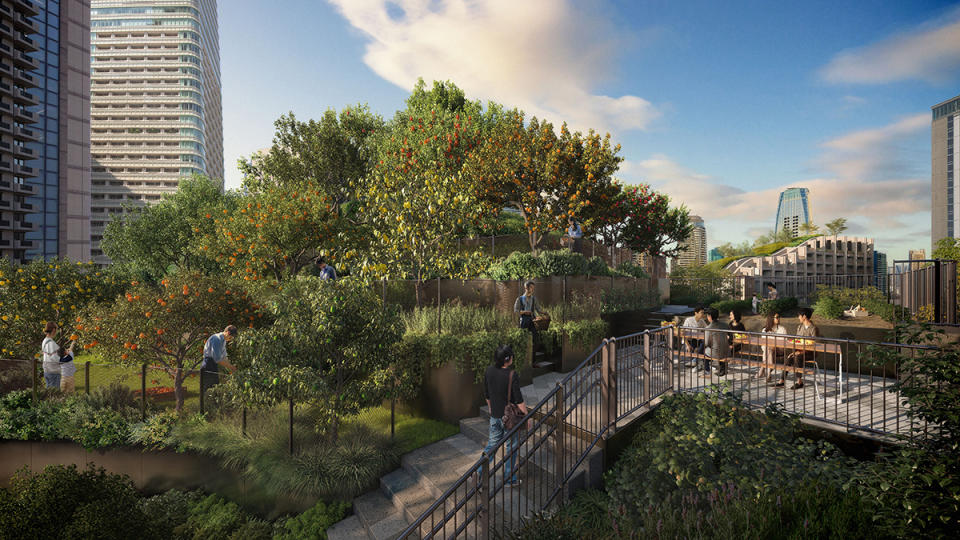Tokyo’s Newest Neighborhood Is a $4 Billion Mini City—Here’s Everything We Know

Somewhere between Roppongi Hills and Toranomon Hills in central Tokyo, there exists what we’re pretty sure is one of the last, and possibly only, Tony Roma-Hard Rock Cafe combo-restaurants left on earth. Just down the road is something far less retro: Azabudai Hills.
More than 30 years and roughly $4 billion in the making, Azabudai Hills is a compact cluster of three vertically integrated high-rise and low-rise buildings punctuated by green spaces. It’s a new, only-in-Japan city-with-in a city, and at its heart is the 64-story, all-glass JP Mori Tower, now the tallest building in the country. Designed by the late César Pelli’s Pelli Clarke Pelli Architects (the man behind Brookfield Place in NYC and the Petronas Towers in Kuala Lumpur), the project has been opening in phases since November.
More from Robb Report
Tokyo's Sézanne Was Just Crowned the Best Restaurant in Asia
Editor's Letter: Inside Robb Report's 2024 Car of the Year Issue
You'll Have to Wait 43 Years to Get a Box of These Frozen Kobe Beef Croquettes
For the 3,500 locals who will live here (it’s also home to the British School in Tokyo), and the thousands more who will commute into work here, that’s all dandy—but why should you, the world traveler, care?

The most obvious answer is Janu Toyko, which opened in Azabudai Hills this month. Aman’s little sister, Janu is aimed at younger Amanjunkies with 122 rooms and suites, eight restaurants, and a massive 43,000-square-foot wellness center. (For the, let’s say, more experienced Amanjunkies, branded two- to six-bedroom Aman residences will fill the 54 to 64 floors of the JP Mori Tower).
But it’s not the only reason to add the district to your itinerary. The Azabudai Hills Market, while lacking the bewildering charm of the Tsukiji fish market, is tricked out with Japanese restaurants, chefs, and ingredients sourced from around the country. It’s also in the running to become one of Tokyo’s premiere shopping districts. Yes, it will have the largest Hermès in the city, but also the full who’s who list of French and Italian designer shops (Cartier, Bulgari, Dior, etc.). Elsewhere there’s a center for preventive medicine, more high-end restaurants, museums, and art galleries—including the new teamLab Borderless.

“This area has so much potential and we are excited to revitalize it,” Masa Yamamoto, PR rep for the Mori Building Company, told Robb Report during our tour of the project. “We’ve assembled land that had been subdivided into small parcels into a large block, and then consolidated building needs in high-rise structures . . . that freed up a vast amount of open space at the ground level.”
And that’s the other reason Azabudai Hills differs from all of the other shopping mall-meets-hotel, hotel-meets-office tower monoliths in Tokyo: It’s a lot greener.
Woven through the area are more than 320 species of plants in vertical orchards. Cherry blossom trees have been planted to create a sense of wellbeing and harmony. There’s even a mini Central Park at the heart of the complex.

“It’s the new cultural heart of the city and these exclusive experiences, the lush greenery, and the rich, communal atmosphere can only be felt here and makes the complex a must-see destination in Tokyo,” Yamamoto said, point out Olafur Eliasson’s aptly titled exhibit “A Harmonious Cycle of Interconnected Nows.”
Little did the artist know, but “Interconnected Nows” also means you can still get ribs and Rock-a-Roma margaritas just around the corner.
Best of Robb Report
The Ultimate Miami Spa Guide: 15 Luxurious Places to Treat Yourself
The 7 Most Insanely Luxurious Spas in the World, From Tokyo to Iceland
17 Reasons the Caribbean Should Be at the Top of Your Travel Itinerary
Sign up for Robb Report's Newsletter. For the latest news, follow us on Facebook, Twitter, and Instagram.

